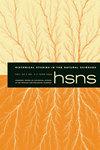动物之家
IF 0.3
3区 哲学
Q2 HISTORY & PHILOSOPHY OF SCIENCE
引用次数: 0
摘要
在20世纪中期,对于美国的研究人员、教师和学术管理人员来说,磅犬的供应和控制是一个关键的焦点和政治争论领域。通过追溯阿拉巴马大学伯明翰分校从一所小型的扩展学院到生物医学研究中心的发展历程,本文探讨了获得流浪狗的政治经济学,揭示了流浪狗是如何成为“救助品”的。狂犬病,一种在那个时期严重威胁美国南部的疾病,被大学演员战略性地利用起来,把城市的收容所变成了一个动物生产设施,扩大了高价值狗的供应。通过分析这种生产系统是如何在一个高度隔离的城市中由种族分层的劳动力维持的,文章将实验室有机体的历史与正在进行的科学、医学和资本主义历史研究联系起来。本文章由计算机程序翻译,如有差异,请以英文原文为准。
In the Animal House
In the mid–twentieth century, the supply and control of pound dogs was a crucial area of focus and political contestation for American researchers, teachers, and academic administrators. By tracing the growth of the University of Alabama at Birmingham from a small extension school to a center of biomedical research within that context, this article explores the political economy of pound dog acquisition, revealing how stray dogs became “salvage commodities.” Rabies, a disease that disproportionately threatened the American South during the period, was strategically instrumentalized by university actors to convert the city pound into an animal production facility and expand the supply of highly valued dogs. By analyzing how this system of production was sustained by a racially stratified labor force within an intensely segregated city, the article connects the history of laboratory organisms to ongoing studies of the history of science, medicine, and capitalism.
求助全文
通过发布文献求助,成功后即可免费获取论文全文。
去求助
来源期刊

Historical Studies in the Natural Sciences
社会科学-科学史与科学哲学
CiteScore
1.00
自引率
0.00%
发文量
24
审稿时长
>12 weeks
期刊介绍:
Explore the fascinating world of Historical Studies in the Natural Sciences, a journal that reveals the history of science as it has developed since the 18th century. HSNS offers in-depth articles on a wide range of scientific fields, their social and cultural histories and supporting institutions, including astronomy, geology, physics, genetics, natural history, chemistry, meteorology, and molecular biology. Widely regarded as a leading journal in the historiography of science and technology, HSNS increased its publication to five times per year in 2012 to expand its roster of pioneering articles and notable reviews by the most influential writers in the field.
 求助内容:
求助内容: 应助结果提醒方式:
应助结果提醒方式:


